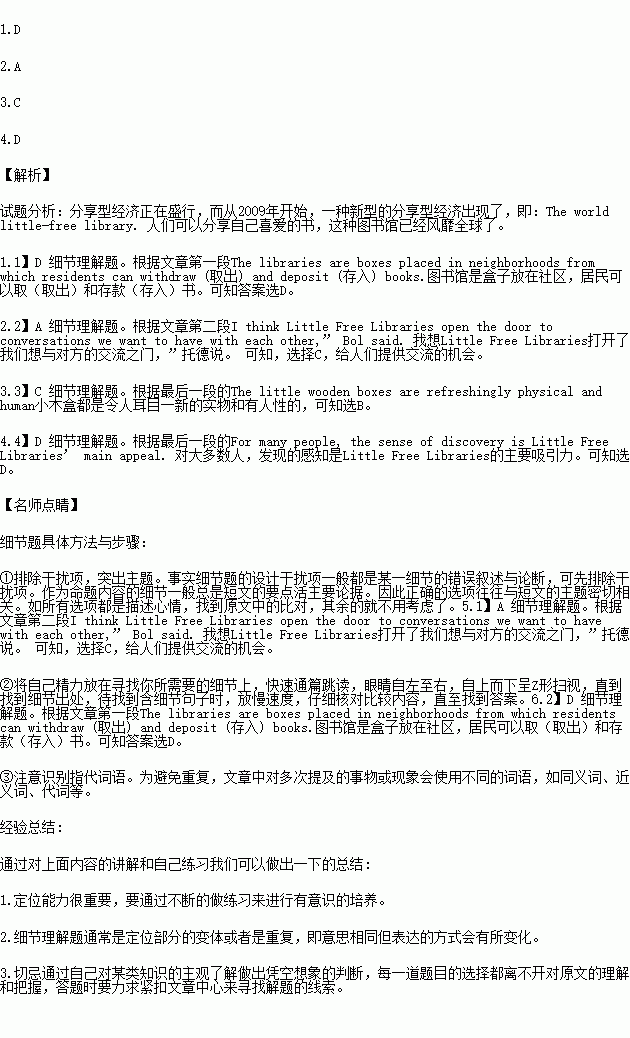题目内容
The sharing economy has grown in recent years to include everything from apartment sharing to car sharing to community tool sharing. Since 2009, a new form of sharing economy has been emerging in neighborhoods throughout the US and around the world—— Little Free Library. The libraries are boxes placed in neighborhoods from which residents can withdraw (取出) and deposit (存入) books. Little Free Libraries come in all shapes and sizes. Some libraries also have themes, focusing on books for children, adults, or tour guides.
In 2009, Tod Bol built the first Little Free Library as a gift to his mother, who was a devoted reader. When he saw the people of his community gathering around it, exchanging conversation as well as books, he knew he wanted to take his simple idea further. “I think Little Free Libraries open the door to conversations we want to have with each other,” Bol said.
Since then, his idea has become a movement, spreading from state to state and country to country. According to Little FreeLibrary.org, there are now 18,000 of the little structures around the world, located in each of the 50 US states and 70 countries in Europe, Africa and Asia.
The Internet has helped to spread Little Free Libraries. But an Atlantic article says the little structures serve as a cure for a world of e-reader downloads. The little wooden boxes are refreshingly physical and human. For many people, the sense of discovery is Little Free Libraries’ main appeal. “A girl walking home from school might pick up a graphic novel that gets her excited about reading; a man on his way to the bus stop might find a volume of poetry that changes his outlook on life,” says the Atlantic article. “Every book is a potential source of inspiration”.
1. How do Little Free Libraries get their books?
A. The communities bought them.
B. Tod Bol donated them.
C. US government provided them.
D. Citizens shared them.
2.Why did Tod Bol want to build more Little Free Libraries?
A. They can offer neighbors more chances to talk.
B. He was inspired by the sharing economy.
C. He wanted to promote his idea worldwide.
D. They are a gift to please his mother.
3.What does the author of the Atlantic article believe?
A. Little Free Libraries are more popular than e-reader downloads.
B. E-reader downloads are undoubtedly beneficial.
C. Little Free Libraries are physical and human.
D. The Internet has helped to spread Little Free Libraries.
4. Little Free Libraries attract readers most in that ________.
A. they are in various shapes and sizes
B. they are located all over the world
C. they connect strangers together
D. they may give readers a sense of discovery

